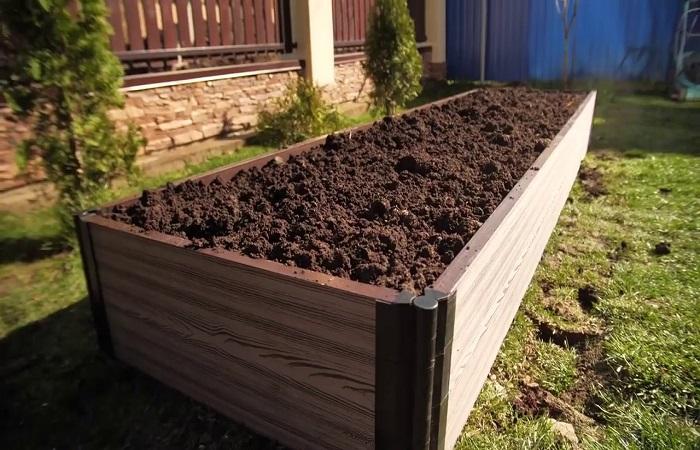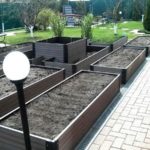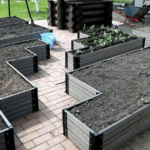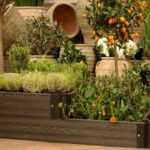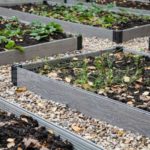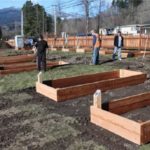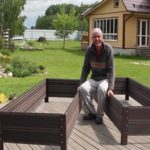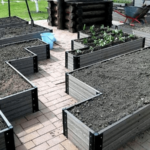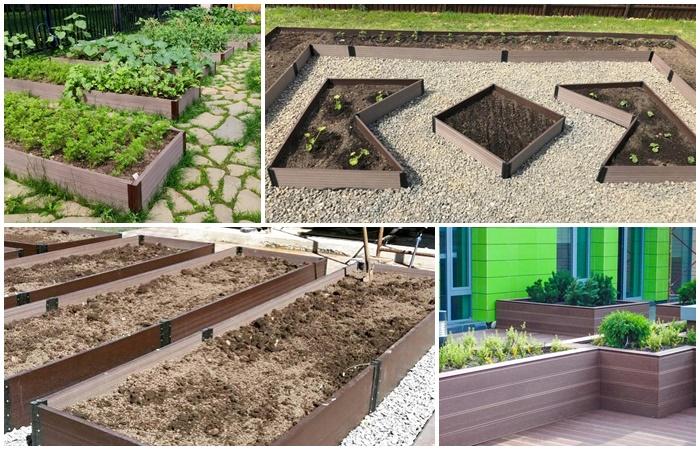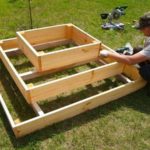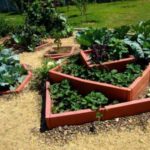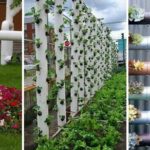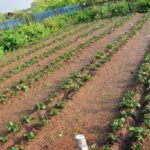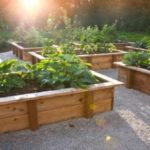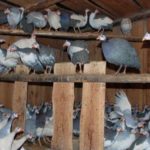Creating beds from WPC is a modern solution that many gardeners choose. They help create a comfortable and functional space. Such structures look especially good in small areas, where it is very important to use the soil as efficiently as possible. The wood-polymer composite used to make beds has excellent characteristics and an affordable price.
What is WPC
WPC beds are considered an excellent alternative to structures made of metal or plastic boards. They are highly practical and perfectly complement the landscape. This is due to their texture.In addition, structures made from WPC are much better than beds made from ordinary wood.
Such structures are made from wood-polymer composite, which is considered an environmentally friendly material. It is capable of allowing air to pass through, which is an advantageous difference from metal and plastic.
WPC is made from wood waste and plastic. These materials are mixed in different parts. Manufacturers typically use 60% wood flour and 40% PVC resin. Special additives are also added to the composition. It may vary depending on the manufacturer.
Advantages and disadvantages
The main advantages of using polymer fencing for building beds include the following:
- Easy to install and fix. For this purpose, a special fastening is used.
- No risk of rotting or fungal infection. The material is also resistant to pests.
- Attractive appearance. The surface of the material resembles the shade and pattern of natural wood. It can be painted if desired.
- The ability to independently create a structure from boards.
- No need for additional processing. The material does not need to be sanded, varnished or other manipulations performed.
- No need for specific care.
- Resistance to adverse climatic factors. The coating does not lose its color and does not dry out.
- Ability to withstand increased loads. The material does not deform under the influence of soil. In addition, it allows you to use various tools.
- Environmental friendliness. WPC is characterized by a safe composition. It does not produce hazardous substances and does not deform under the influence of elevated temperatures. In addition, the wood-polymer composite does not burn.
However, the material also has a number of disadvantages:
- Risk of moisture accumulation and mold.WPC contains wood ingredients that absorb and store water.
- The risk of destruction of polymers contained in WPC under the influence of ultraviolet radiation.
How to make beds from WPC with your own hands
To create raised beds, it is possible to buy ready-made factory structures, which are very easy to assemble. Many companies sell such materials - for example, the peasant farm "Old Farm".
You can also purchase standard boards and make the structure yourself. To do this, in addition to the main material, you need to take hinges for fixing the boards and pegs for installing the structure on the ground.
To make a bed from WPC decking boards, it is recommended to do the following:
- Cut the boards to obtain pieces of suitable length.
- Connect the fragments with hinges and pegs to form a box. In this case, the corners and internal posts should be slightly higher than the sides - by 2 and 5 centimeters, respectively. This is required for the construction of high fences.
- Make markings and dig holes for the posts on the sides.
- Move the box to the garden bed, install the posts in the soil and compact it. To strengthen the structure, it is permissible to use overhead metal corners.
Examples of ready-made solutions
WPC beds vary in size and shape. The following types of structures can be cited as examples:
- Standard - their length usually does not exceed 9 meters, and their height is up to 25 centimeters. This option is considered the simplest. It can be used by beginners. A distinctive feature of such structures is their ease of maintenance. They are easy to dig, weed, hill up and water.Also, standard beds provide ease of planting and harvesting.
- High - in this case, the height of the structure reaches 40 centimeters. This option is suitable for experienced gardeners. It looks very unusual. In addition, the creation of such structures will require more costs.
- Warm - such beds have a built-on greenhouse. They are recommended for planting heat-loving crops. It is important to adhere to the rules for constructing the structure.
Possible mistakes
Inexperienced gardeners make a number of mistakes when creating beds:
- No gap to compensate for board expansion. Terrace boards are deformed under the influence of external factors - they lengthen and narrow. Therefore, during installation it is important to leave gaps so that the boards can expand linearly. It is especially important to do this in areas where there are limiters.
- The use of wooden logs. Doing this is strictly prohibited. Wood and WPC have different linear expansion coefficients. This provokes rapid deformation of the structure.
- Failure to comply with the recommended interval between lags. This leads to an increase in the load on the boards, which leads to their sagging and deformation.
- Violation of the rules for preparing the surface for laying the terrace system. It is important to level the coating well. Otherwise, the irregularities will intensify and lead to deformations.
- Weak or tight fasteners. Often, when installing boards, the clamps are not tightened. As a result, the flooring becomes loose. Excessively rigid fasteners provoke the formation of cracks during installation and operation.
Creating beds from WPC has certain features. To get a strong and reliable structure, it is important to choose the right material and strictly adhere to the recommendations of experts.

